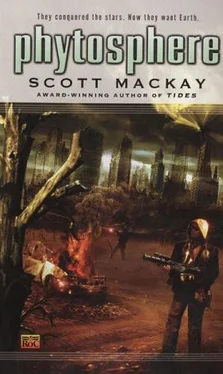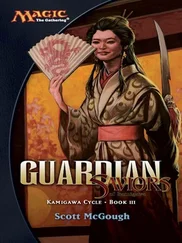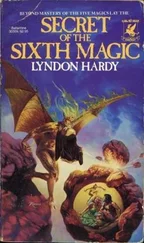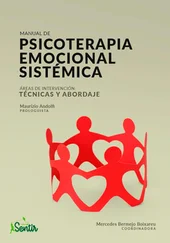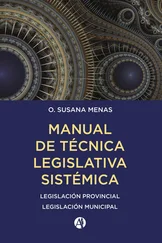She had plucked eyebrows, now lined with twinkling blue sequins. She had painted her lips a shade of plum.
Before he could accept Stephanie’s offer, Dr. Langstrom said, “I got the attachment you sent. The microscopic photographs were spectacular.” Langstrom glanced at Stephanie with marked disapproval, then turned back to Gerry. “They brought to mind some of the Martian fossils I’ve researched. I would like to look at the samples firsthand, if you don’t mind.”
Gerry studied Langstrom. “Be my guest. What do you make of the photographs?”
“Rather a stark comparison between the ones taken in the lab and the ones taken in the shroud itself, isn’t there? Microscopic section photographs right inside the foul thing. How did you arrive at such a technique?”
Gerry shrugged. “You’ve got to study things in their natural habitat, Luke. Studying it in the lab is only going to lead to a lot of miscues.”
Langstrom’s amused intolerance softened. He looked as if he had been given a fascinating new toy.
“Interesting organism.”
“You got my e-mail about the carapace?”
Langstrom’s eyes narrowed. “Reminds me of the carapace of Aresphyta C-4721. If only Nectaris had a DNA sequencer.” The Martian turned to the mayor, as if he were to blame.
“Anything like that is always done on Earth,” said the mayor.
“Because it would be interesting to see if the Tarsalans used Aresphyta genetic strands to construct this organism. C-4721 is of course a prehistoric organism, and I’ve only ever seen fossil specimens. But it’s not beyond the realm of possibility that the Tarsalans could have recovered a live specimen. They’ve been coring the Martian ice cap for the last several years, and C-4721 mimics certain present-day Martian organisms, especially in the growth of its carapace. Grows like a tooth, you know. Impervious to ultraviolet radiation. It wouldn’t surprise me at all if the Tarsalans spliced C-4721 into their phytoplankton base.”
The mayor spoke up. “Gerry, no pressure, my man, but any ideas on how we might… like… do a pest-control number on the phytosphere?”
“Phytosphere? Where’d you come up with a name like that?”
“Just what the Earth guys are calling it.”
Gerry’s confusion, ambivalence, and puzzlement over the shroud—phytosphere—came back. “I don’t know what we’re going to do.” Phytosphere. That would be a Neil name. “Every time I think I have an answer, I run into a roadblock.” Everything was Greek to Neil. “I’m thinking herbicide—get AviOrbit to design and build some applicator satellites—but I’m not sure it would work because many kinds of phytoplankton can absorb huge amounts of herbicide with little, if any, detrimental effect.” He wondered if Neil was thinking herbicides. “Going the herbicide route might be counterproductive.”
“It would be more than counterproductive,” said Hulke. “It would be impossible.”
“Why?” said Gerry.
“Because we have no herbicide or large-scale chemical production facilities here on the Moon. We don’t even use herbicides here. We’re a… a hermetically sealed community. Everything that comes to our customs depot is meticulously screened. We don’t have any weeds in any of our gardens…or hydroponic acreages, because the seeds for such plants have never gotten past our teams in the first place.”
So even if they wanted to go the herbicide route, it was out of the question anyway? “What’s the latest drop from Earth say? Phytosphere. Who thought that name up?”
The mayor glanced away, as if he were embarrassed. “That would be your brother. He’s in the news, Gerry.” Hulke focused on him and folded his hands. “He’s made a number of announcements to the media.”
Gerry nodded stoically. “And what’s he got to say for himself? I mean, over and above calling the shroud the phytosphere.”
Langstrom piped in with an odd kind of glee. “He’s calling the individual organisms xenophyta.”
Gerry regarded the Martian evenly, then turned back to the mayor. “Anything else?”
Hulke’s eyes narrowed. “Nothing specific about their plans to destroy the… the phytosphere.” As if the mayor were reluctantly giving in to Neil’s nomenclaturural template. “Only that they’ve definitively confirmed that it is in fact derived from ocean plankton, just as we have, and a few other components that they wouldn’t disclose.” An expression of patient aggravation came to the mayor’s face. “They’ve devised a… how did they phrase it… a three-pronged approach to dismantling the phytosphere. These drops from Earth… God, they’re funny.” Yet the mayor looked peeved. Was he wondering why Gerry hadn’t devised his own three-pronged approach? “I asked them for a full scientific report but they… they more or less flipped me the finger. If that’s the way they’re going to play it—by the way, what about… like, a report from you, Ger?”
Gerry shook his head, momentarily distressed by how baffling he found all the Smallmouth ’s information. “I haven’t got any reports, Malcolm. All I’ve got are a lot of questions. I guess in their drop they didn’t say anything about the way the xenophyta behaved in the lab as opposed to the way they behaved in the actual phytosphere.”
The mayor paused, and he could see it in the mayor’s eyes: Hulke thought that maybe—just maybe—Dr. Gerald Thorndike, formerly of the NCSU, might have something. “Why? Is there a big difference?”
“A huge difference. The xenophyta… they embrace each other when they’re in the phytosphere. They have these two little flagella on each organism—tiny whiplike appendages, like the flagella on certain phytoplankton. When they’re in the phytosphere, these flagella twine around each other to form long chains, and these long chains then go on to form huge mats, which then go on to the bloom phase. Then the blooms join to form the entire phytosphere. These flagella are extremely active in the phytosphere.
But you take the xenophyta out of the phytosphere and put them in the lab and the flagella grow limp.
The xenophyta still congregate in colonies, but they don’t bind with their flagella. So far I’ve yet to discover any electrical or chemical stimuli inside the xenophyta that can account for the flagella becoming paralyzed like that. They seem to need the entire phytosphere to bind, and I can’t figure it out.”
Outside, the sky turned purple and now had orange stars. A waiter came by with a tray of smokables but everybody had had enough.
Gerry looked around at the group. In Stephanie’s eyes he saw a burgeoning idolatry. In Malcolm Hulke he saw apprehension, as if the mayor were blaming him for coming up with yet more obstacles. Ian Hamilton wasn’t even paying attention anymore, and was instead focusing on Stephanie, gazing at her as if she were the most beautiful creature on the Moon.
Luke Langstrom was the only one who looked fascinated by the problem. “So do you have any theories about it?”
Gerry’s brow rose. “Only that there’s got to be some trigger that’s turning these flagella on and off, depending on where they are.”
Later, as they strolled around Lake Möbius, Stephanie took his arm.
“Maybe I can sit in at some of your sessions,” she said.
“If you’d like.”
“Because I’ve been thinking about the shroud. The phytosphere. Whatever you want to call it.”
“You have?”
“An outside opinion might help. Are there any showgirls on your committee?”
“No.”
“Then don’t you think you should have one?”
He gave her a smile. “I think maybe we should.” To make things perfectly clear, he added, “I’ve got my wife down there. And the more people working on the problem, the better.”
Читать дальше
